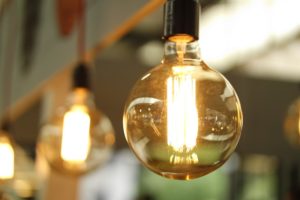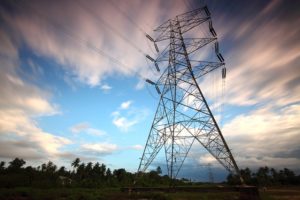The History of Electricity
The history of electricity is a fascinating subject. When we see a light go on or an appliance fire up, it is hard to imagine the thought processes that went into making that possible. In this article, we will look at the history of electricity from its very beginnings to how it has evolved over the years.
Benjamin Franklin and The History of Electricity
 The history of electricity stems all the way back to the year 1752, which marked the famous incident of Benjamin Franklin flying a kite during a thunder and lightning storm. Franklin tied a key to the end of the kite string. The electricity from the storm clouds flowed down the wet string and ended up giving him an electric shock. This would serve as the first form of evidence that electricity existed. But it would be a long time until people could actually figure out how to use electricity in a practical sense.
The history of electricity stems all the way back to the year 1752, which marked the famous incident of Benjamin Franklin flying a kite during a thunder and lightning storm. Franklin tied a key to the end of the kite string. The electricity from the storm clouds flowed down the wet string and ended up giving him an electric shock. This would serve as the first form of evidence that electricity existed. But it would be a long time until people could actually figure out how to use electricity in a practical sense.
Faraday Discovers the Basic Principles of Electricity
One of the first breakthroughs in the history of electricity occurred when British scientist Michael Faraday discovered its basic principles. He discovered he could create an electric current by moving magnets inside of coils of copper wire. This revolutionized how we use energy. Faraday’s basic theory still comes to play on how we produce power today. Although now, we have the capability of doing this on a much larger scale.
Thomas Edison Discovers the Light Bulb
 Thomas Edison was another pioneer in electricity; yielding the successful invention of the light bulb. Running with a generator, this invention began replacing gas lighting in certain locations. By the end of the 1880’s, there were small electrical stations based on Edison’s design that started popping up in U.S. cities, although the amount of power generated was only enough to provide electricity to certain city blocks.
Thomas Edison was another pioneer in electricity; yielding the successful invention of the light bulb. Running with a generator, this invention began replacing gas lighting in certain locations. By the end of the 1880’s, there were small electrical stations based on Edison’s design that started popping up in U.S. cities, although the amount of power generated was only enough to provide electricity to certain city blocks.
Bringing Electricity to the Masses
By the 1930’s electricity was present in most larger cities, but was not available to many who were residing in farming areas. Electric companies were privately owned, with a strong interest in making money. They didn’t feel that it was in their best interest to provide power to poorer communities.
Franklin D. Roosevelt felt that everyone should enjoy the benefits of electricity. In 1935, he created the Rural Electric Administration that ensured the availability of electricity in rural areas. By 1939, the number of rural homes with electricity had risen by 25%. Farmers were able to access electrical appliances like stoves and washing machines which made life much easier for them.
Electricity Today
Today, almost every household and establishment in the world has electricity. It is a key part of modern life and continues to grow in its applications along with the technologies of the modern world. With almost every aspect of today’s existence relying on electricity, it’s hard to imagine that there was ever a time when life went on without it. It’s fascinating to look at the history of electricity and wonder if our forefathers realized just how important it would be in our world today.
